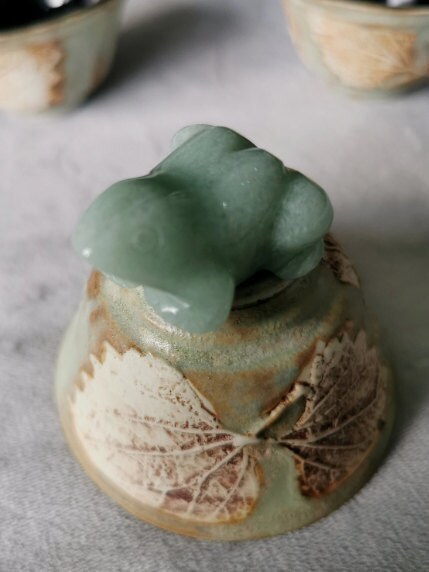Aventurine, a strikingly beautiful and widely cherished gemstone, has captivated humanity for centuries. Known for its shimmering effect, often called aventurescence, this quartz mineral has played a significant role in history, spirituality, and holistic healing. From its ancient origins to its modern-day uses, aventurine continues to be treasured by gem enthusiasts, healers, and collectors alike. This essay delves into the history of aventurine, its geological characteristics, cultural significance, and the myriad of benefits it offers.
The history of aventurine dates back thousands of years, with its earliest uses found in various civilizations. The name "aventurine" originates from the Italian word avventura, meaning "by chance." This term was first applied to the gemstone in the 18th century when Venetian glassmakers accidentally discovered a similar shimmering effect while working with molten glass.Ancient Chinese artisans highly valued aventurine and often used it to carve figurines, amulets, and jewelry. In Chinese folklore, aventurine was believed to be a stone of luck and prosperity, often associated with wealth and business success. Similarly, in ancient Tibet, aventurine was incorporated into statues and religious artifacts to symbolize good fortune and enhance spiritual wisdom.In South America, indigenous tribes used aventurine for its supposed healing properties and as a talisman to promote confidence and well-being. Many early cultures considered the stone sacred, believing it to bring protection, harmony, and a connection to nature. Today, aventurine continues to be used for its historical and metaphysical significance.
Aventurine is a variety of quartz distinguished by its translucency and the presence of shimmering mineral inclusions, typically mica or hematite. This aventurescence gives aventurine its signature sparkle. It forms naturally in metamorphic rocks and is found in various regions worldwide, including Brazil, India, Russia, and South Africa.The most common color of aventurine is green, attributed to the presence of fuchsite, a type of green mica. However, aventurine can also appear in shades of blue, red, orange, yellow, brown, and even gray, depending on the mineral inclusions present. Green aventurine is particularly well known for its connection to prosperity and emotional healing.
Cultural and Spiritual Significance
Throughout history, aventurine has been associated with numerous cultural and spiritual traditions. In ancient times, it was often linked to abundance, leadership, and courage. Warriors in some cultures carried aventurine amulets into battle, believing it would grant them strength and protection.In modern crystal healing practices, aventurine is associated with the heart chakra, which governs love, compassion, and emotional balance. Many practitioners use green aventurine to promote personal growth, dispel negativity, and attract good fortune. It is often referred to as the "Stone of Opportunity," making it a popular choice among those seeking career advancement, financial success, or new opportunities in life.
Aventurine is believed to offer a wide range of benefits, from physical healing properties to emotional and spiritual well-being. While scientific evidence does not support these claims, many individuals who practice crystal healing swear by its positive effects.
Aventurine is thought to have various health benefits, particularly related to the heart and circulation. Some proponents believe that it can:
- Improve cardiovascular health by enhancing blood flow and reducing inflammation.
- Support overall well-being by boosting the immune system and balancing energy levels.
- Aid in skin conditions such as acne, eczema, and allergies.
Many people turn to aventurine for its ability to promote emotional stability and mental clarity. It is often used to:
- Reduce stress and anxiety by calming an overactive mind.
- Encourage optimism, confidence, and motivation.
- Help individuals overcome emotional blockages and past traumas.
In spiritual practices, aventurine is known for its ability to attract positive energies and enhance one's connection to nature. It is frequently used to:
Align the heart chakra, allowing for deeper emotional connections and self-love.
Manifest abundance and prosperity in various aspects of life.
Promote a sense of peace and harmony, making it a great stone for meditation.
Aventurine is utilized in numerous ways, ranging from jewelry to decorative items and healing tools. Some of the most common applications include:
Jewelry: Aventurine is a popular choice for necklaces, bracelets, and rings, allowing individuals to carry its energy throughout the day.
Meditation and Energy Healing: Many practitioners place aventurine on their heart chakra during meditation to enhance relaxation and inner peace.
Feng Shui: In traditional Chinese Feng Shui, aventurine is placed in homes or workplaces to attract wealth and prosperity.
Elixirs and Infused Water: Some holistic practitioners create aventurine-infused water to promote health and well-being (though caution is advised to ensure the stone is safe for this use).


